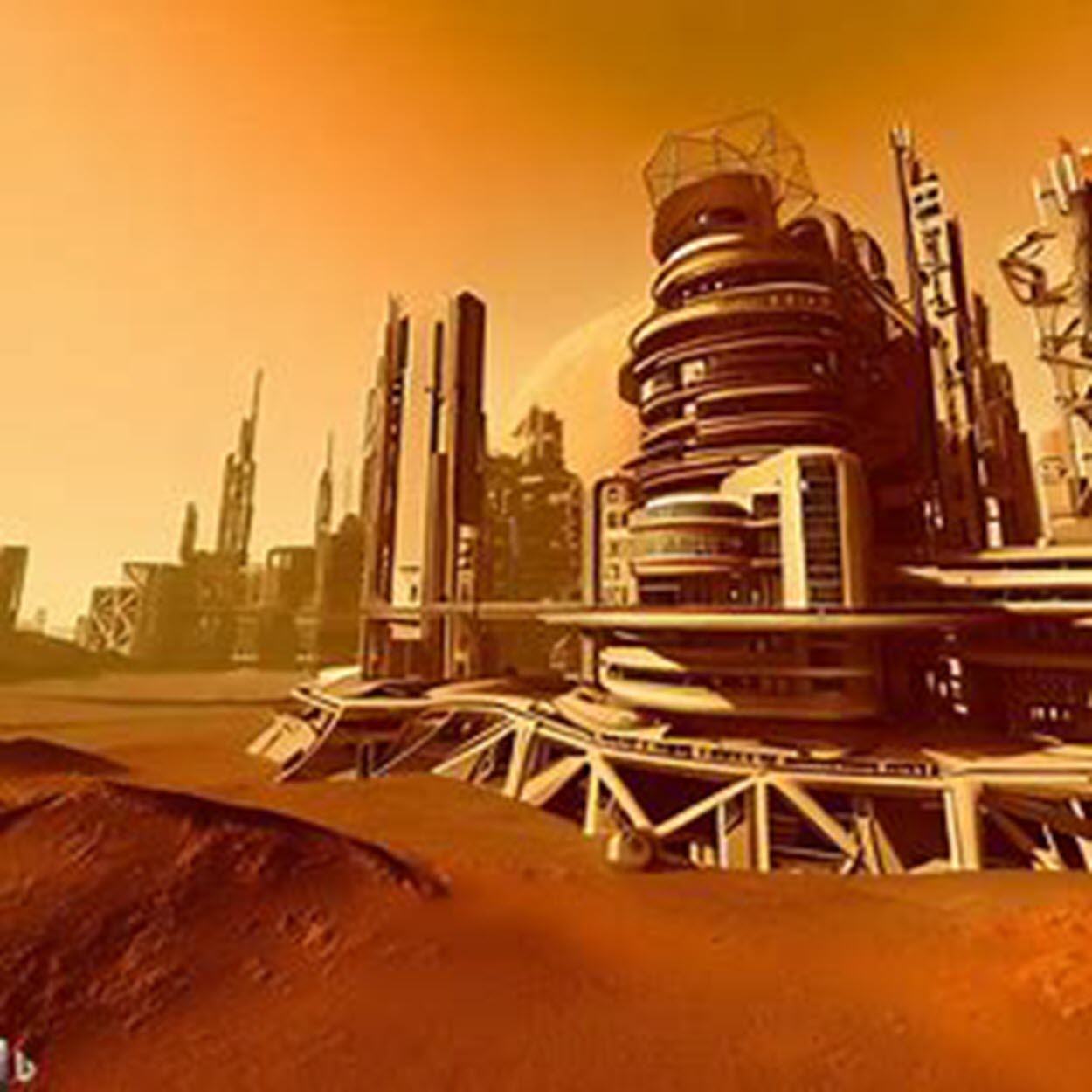Explore the Future of Martian Living
Welcome to Landscape Mars
Discover the groundbreaking advancements in Martian architecture, transportation, and urban development. Join us as we unveil the future of life on the Red Planet.
Mars is the second-smallest planet in the Solar System after Mercury, Mars is the fourth planet from the Sun. Given that it has a reddish color, it was given the name of the Roman god of war. Mars is a terrestrial planet with a small atmosphere that shares similarities with Earth’s valleys, deserts, and polar ice caps as well as the Moon’s impact craters.
The tilt that causes the seasons, as well as the rotating period and seasonal cycles, are all comparable to those of Earth. The tallest volcano and second-highest known mountain in the Solar System, Olympus Mons, and one of the Solar System’s largest canyons, Valles Marineras, are both located on Mars. A large impact structure that may cover 40% of the earth is the smooth Borealis basin in the northern hemisphere. Mars has two small, atypically shaped moons called Phobos and Deimos.

Life on Mars – How Humans Are Adapting to the Red Planet
Thanks to the efforts of NASA, SpaceX, and other organizations and businesses that have flown humans to the Red Planet, it is now a reality.
But what’s it like to live there, and how are people adjusting to the opportunities and difficulties of this brand-new world?
After a six-month journey from Earth, the first humans reached Mars in 2036.
They constructed their first Martian outpost, known as Olympus Base, after landing in an area called Elysium Planitia.
The base is made up of many modules that house residences, workspaces, greenhouses, and power plants.
Traveling to Mars – How and When Will Humans Reach the Red Planet?
The next stop for human exploration is Mars. Humans have been captivated by the Sun’s fourth planet for ages, and we can now visit it. But how and when are we going to get there?
It is neither straightforward nor easy to travel to Mars. There are several difficulties and dangers present, including those related to distance, speed, timing, navigation, communication, radiation, and landing. It also calls for cutting-edge tools and skills that are still under development.
Depending on how far apart they are in their orbits, Earth and Mars are at different distances. They can travel up to 55 million kilometres in proximity and 400 million km in distance. 225 million kilometres is about the average distance. As a result, a spacecraft going to Mars would have to traverse a great distance in a short period of time.


Currency on Mars
There is yet no official response, although some have speculated that cryptocurrencies might work as a form of money on Mars.
A digital currency known as cryptocurrency employs blockchain technology and encryption to safeguard transactions and thwart counterfeiting. It is not issued or validated by a central authority or middleman, such as a bank or a government. Some benefits of cryptocurrency for Mars include:
• It can be tailored to the unique needs and challenges of Mars, such as time delays, limited resources, and environmental hazards;
• It can encourage innovation and collaboration among the settlers by providing incentives and rewards for resolving issues and advancing the common good, and
• It can be transferred quickly and cheaply across long distances without the need for physical transport or intermediaries.
There are several projects where humans work on traveling to Mars or exploring the red planet. Here are some of them
Space Travel with SpaceX’s Starship
Elon Musk, the founder of SpaceX, and his brilliant company frequently spring to mind when we consider cutting-edge space endeavours in the modern day. Starship stands out as a representation of the future of space travel among its ambitious endeavours. Starship, which was intended to be more than just a spacecraft, stands for the idea that there should be life on other planets
Space Exploration with the Humans on Mars
We are drawn to the final frontier of space exploration by its many opportunities, difficulties, and problems. The prospect of people setting foot on Mars involves much more than just rockets and spacesuits; it involves a wide range of issues, from the scientific to the philosophical.
NASA’s Mission to Mars
The Red Planet has always captivated humankind. We have studied its geology and atmosphere through telescopes, and we have even speculated about possible alien civilizations.
It comes as no surprise that one of the ultimate aims of space exploration is to take people to Mars.
Chinese Mars Exploration Roadmap
The fourth planet from the Sun, Mars, has long been particularly alluring to humans. It has emerged as a top target for investigation beyond our own celestial doorway because of its reddish hue and alluring secrets. Although NASA is not the only organization with its eyes set on the Red Planet.
